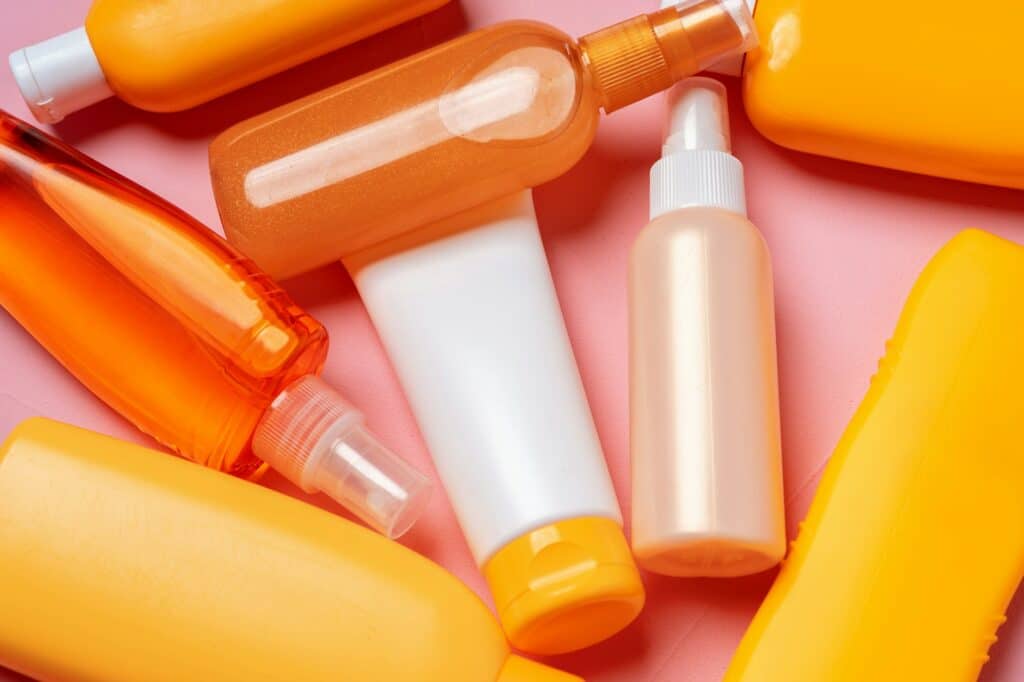Enjoying the glow of a sun-kissed tan without the negative consequences of UV exposure has never been simpler. Learning the art of self-tanning can help you achieve a natural-looking tan from the comfort of your home, whether you want to improve your complexion year-round or get ready for a special occasion.
Starting a self-tanning adventure brings up a world of possibilities for getting that desired bronzed look without going outside thanks to the abundance of fake tan products and procedures available. For novices, however, navigating the realm of self-tanning can be intimidating. This article, however, will help you get the ideal fake tan at home, from picking the best product to aftercare.
What is a Self-tanner
Self-tanner, or fake tan, is a substance that imitates the appearance of a natural tan without requiring sun exposure. Its active component, dihydroxyacetone (DHA), interacts with the amino acids in your skin’s dead layer to temporarily darken it and create the appearance of tanner skin. This method is an excellent technique to look bronzed all year round, and it’s very safe.
How to Choose the Right Products
Numerous fake tanning products are available, each with a unique set of benefits. These products include lotions, mousses, sprays, and wipes. Beginners and people with dry skin might benefit greatly from lotions and creams because they are easy to apply evenly and frequently include moisturizing components.

Meanwhile, for more experienced users, mousses and sprays could be your best option since they dry quickly. Think about your desired amount of tan and your natural skin tone when choosing a shade; it’s usually advisable to start with a lighter shade and go up if necessary.
How to Prepare Your Skin
For a good fake tan, preparation is essential. Here’s how to properly prepare oneself, step-by-step:
1. Scrub off
Using a mild scrub or exfoliating mitt, begin by thoroughly exfoliating your entire body. Pay special attention to dry spots such as the elbows, knees, ankles, and feet. By removing dead skin cells, this procedure guarantees a flat surface for the self-tanner, avoiding uneven coloration and patchiness.
2. Shave or Wax Hair
Shave or wax if needed, and do so at least 24 hours before applying fake tanning. This produces a more equal application by allowing any wounds or irritations to heal and preventing the self-tanner from adhering to hair follicles.
3. Put Wet Areas Under Water
Put a little layer of oil-free moisturizer on dry regions such as the elbows, knees, ankles, and feet. Hydrated skin helps avoid dark spots and streaks and absorbs self-tanner more evenly.
4. Remove Deodorant and Makeup
Make sure your skin is clean and devoid of any skincare products, deodorant, or makeup before applying fake tanning. These may form barriers that prevent the self-tanner from being absorbed properly and cause uneven coloring.
5. Protect Your Nails and Hair
Apply a tiny bit of petroleum jelly or moisturizer to your nails, eyebrows, and hairline to stop discoloration. This serves as a shield and prevents the self-tanner from discoloration.
6. Put on Proper Clothes
When applying artificial tan, wear loose, dark-colored clothing and underwear. Loose clothing allows the self-tanner to dry without rubbing off on other surfaces, while dark textiles reduce the chance of stains.
7. Use a Tanning Mitt
Applying self-tanner on your hands should be done using gloves or a tanning mitt for even coverage and stain protection. In addition to preventing streaks and uneven coloring, this aids in the product’s equal distribution.
8. Apply in Sections
To achieve complete coverage, work the product into each part of your skin in circular motions. If you are bending, start at your legs and work your way up to prevent creases.
9. Be Careful Around Hands and Feet
Exercise caution when handling your hands and feet since they have the potential to absorb excess product. For these difficult areas, use the residue that remains on the mitt for a lighter application.
10. Face Application
To ensure a natural-looking blend with your body, mix the tanning product with an equal amount of moisturizer if applied to your face.
How to Maintain Your Fake Tan

To prevent smearing, wait until your fake tan has completely dried before dressing. If you want to avoid the tan from transferring, wear loose, dark clothing. The amount of time needed for it to fully mature will depend on the product. In addition, do not take a shower, perspire, or get wet during this period. To guarantee an even fading and to extend the longevity of your tan, moisturize every day.
Common Mistakes to Avoid When Self-Tanning
It takes careful application and attention to detail to get a perfect self-tan. Even experienced self-tanners, nevertheless, are susceptible to typical errors that leave them with streaks, uneven color, or odd tones. Here are some of the most common mistakes people make when self-tanning:
Skipping Exfoliation
Dead skin cells can build up on the skin’s surface, resulting in uneven tan retention and a blotchy look. Give careful exfoliation the priority to provide an even, smooth covering.
Ignoring Dry Areas
The areas surrounding the elbows, knees, ankles, and feet are more likely to absorb self-tanner, which leads to an uneven and darker hue. Before self-tanning, apply a thin layer of moisturizer to these areas to form a barrier and stop excessive absorption.
Applying Too Much Product
Using too much self-tanner might result in streaks, uneven color, and an unnatural look. Layers of product can be added gradually as needed, starting with a tiny amount and blending well to get a flawless finish.
Failing to Blend
Getting a tan that looks natural requires careful blending. To achieve a consistent finish, take your time massaging the self-tanner into the skin in circular motions, making sure to distribute it evenly and smoothly between the areas.
Not Washing Your Hands After Application
Self-tanner application might leave your palms looking ugly orange if you don’t wash them right away. Rinse your hands well with water and soap to get rid of any leftovers and stop unintended discoloration.
Skipping Moisturizer
Skin that is moisturized helps the self-tanner apply more smoothly and keeps your tan longer. To maintain the hydration of your skin and increase the longevity of your self-tan, include frequent moisturizing in your skincare regimen.
Overlooking the Hairline and Eyebrows
If self-tanner comes into contact with the hairline or eyebrows, it can easily cause discoloration. For a natural-looking finish and to prevent dark spots, use a tiny quantity of product and a light touch around these areas.
Self-tanning is Now Easier Than Ever!
At first, fake tanning at home may sound scary, but you can get a gorgeous, natural-looking tan with the correct planning, application, and aftercare. The actual application process calls for thorough preparation and the appropriate equipment. For maximum coverage and to avoid streaks, using a tanning mitt or gloves can help ensure a uniform dispersion of the lotion.
One can safely and successfully obtain a gorgeous bronzed look and enjoy the shine of sun-kissed skin without the damaging effects of UV radiation by carefully planning and applying fake tan. Whether you want a deep, tropical tan or just a subtle glow to your complexion, following these tips will guarantee that you get the results you want safely and efficiently.
